Urban living, limited outdoor space, or a busy lifestyle doesn’t have to stop you from growing your own fresh vegetables. Many vegetables are perfectly suited for container gardening, balcony pots, or indoor setups, allowing you to enjoy homegrown produce year-round. With the right selection, soil, and care, even a small windowsill can become a mini vegetable garden.
This guide highlights seven vegetables that thrive without a traditional garden, along with expert tips on growing them successfully in containers.
1. Lettuce
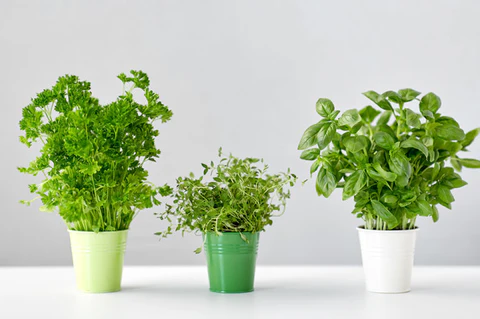
Why It Thrives in Containers
Lettuce is a fast-growing, shallow-rooted leafy green that adapts perfectly to pots and trays. It prefers cool temperatures and can be harvested multiple times using the “cut-and-come-again” method.
Growing Tips
- Use 6–8 inch deep containers with well-draining soil.
- Plant in partial shade or filtered sunlight for hotter climates.
- Sow seeds every 2–3 weeks for a continuous supply.
- Keep soil consistently moist but not waterlogged.
Varieties Recommended
- Leaf lettuce: ‘Black Seeded Simpson,’ ‘Red Sails’
- Butterhead lettuce: ‘Tom Thumb,’ ‘Buttercrunch’
2. Spinach
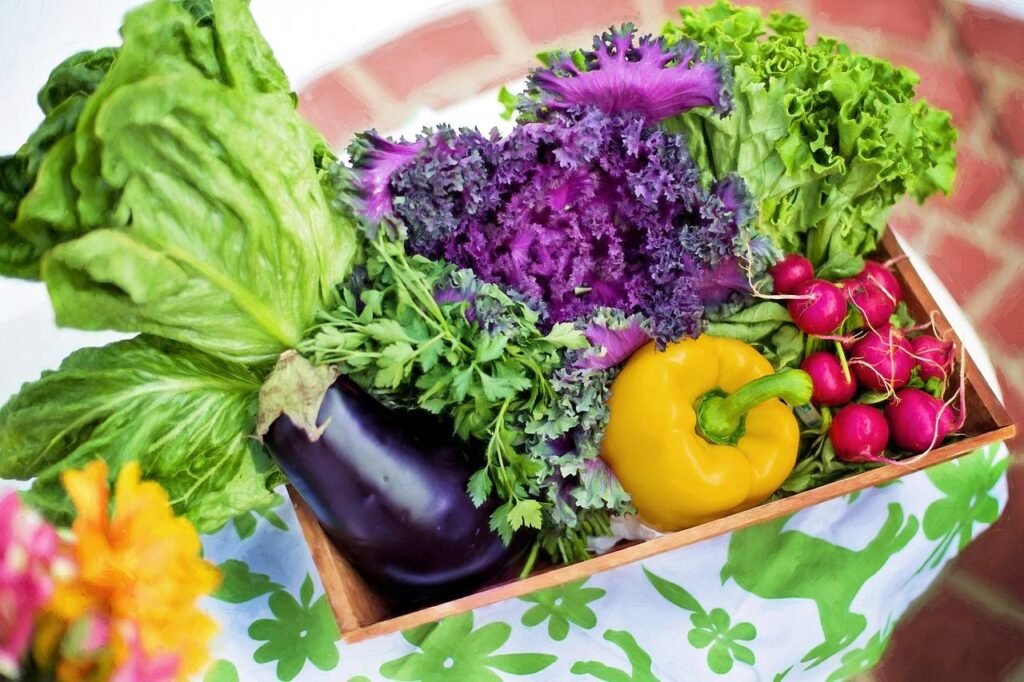
Why It Thrives in Containers
Spinach grows quickly in small spaces and adapts to cooler temperatures, making it ideal for indoor or balcony gardens. It requires minimal depth and benefits from frequent harvesting.
Growing Tips
- Use 6–10 inch deep containers filled with nutrient-rich soil.
- Ensure 4–6 hours of sunlight or use a grow light indoors.
- Harvest leaves when young for tender texture.
Varieties Recommended
- ‘Bloomsdale’ – hardy, slow-bolting
- ‘Baby Leaf’ mixes – fast-growing, perfect for salads
3. Radishes
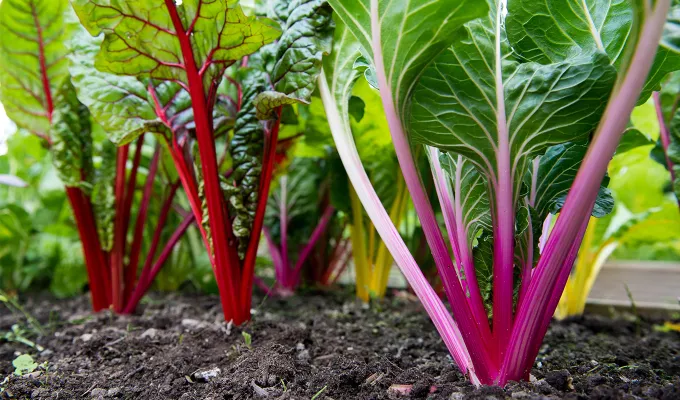
Why It Thrives in Containers
Radishes are quick-growing root vegetables that do not require deep soil, making them excellent for pots. They mature in 3–5 weeks, offering instant gratification for gardeners.
Growing Tips
- Use 6–8 inch deep containers with loose, well-draining soil.
- Sow seeds thinly and thin seedlings to allow space for root development.
- Provide consistent moisture to prevent bitter or tough roots.
Varieties Recommended
- ‘Cherry Belle’ – small and round
- ‘French Breakfast’ – elongated, mild flavor
4. Tomatoes (Compact or Dwarf Varieties)
Why It Thrives in Containers
Tomatoes are a favorite container vegetable. Dwarf or determinate varieties remain compact while producing abundant fruit, making them perfect for balconies, patios, or indoor spaces with sufficient sunlight.
Growing Tips
- Use 12–18 inch deep containers for better root growth.
- Ensure at least 6–8 hours of sunlight daily.
- Support plants with stakes or cages to prevent sprawling.
- Fertilize regularly with a balanced or tomato-specific fertilizer.
Varieties Recommended
- ‘Tiny Tim’ – dwarf cherry tomato
- ‘Patio Princess’ – compact, high-yielding
5. Peppers (Bell and Chili)
Why It Thrives in Containers
Peppers are compact plants that grow well in pots and respond well to warm, sunny conditions. Both bell peppers and hot chilies can thrive indoors or on a balcony.
Growing Tips
- Use 10–12 inch deep containers with fertile, well-draining soil.
- Provide 6–8 hours of sunlight or bright grow lights.
- Water consistently and avoid letting the soil dry completely.
- Pinch early flowers to encourage stronger plant development.
Varieties Recommended
- Bell peppers: ‘California Wonder’
- Chili peppers: ‘Cayenne,’ ‘Jalapeño’
6. Green Onions (Scallions)
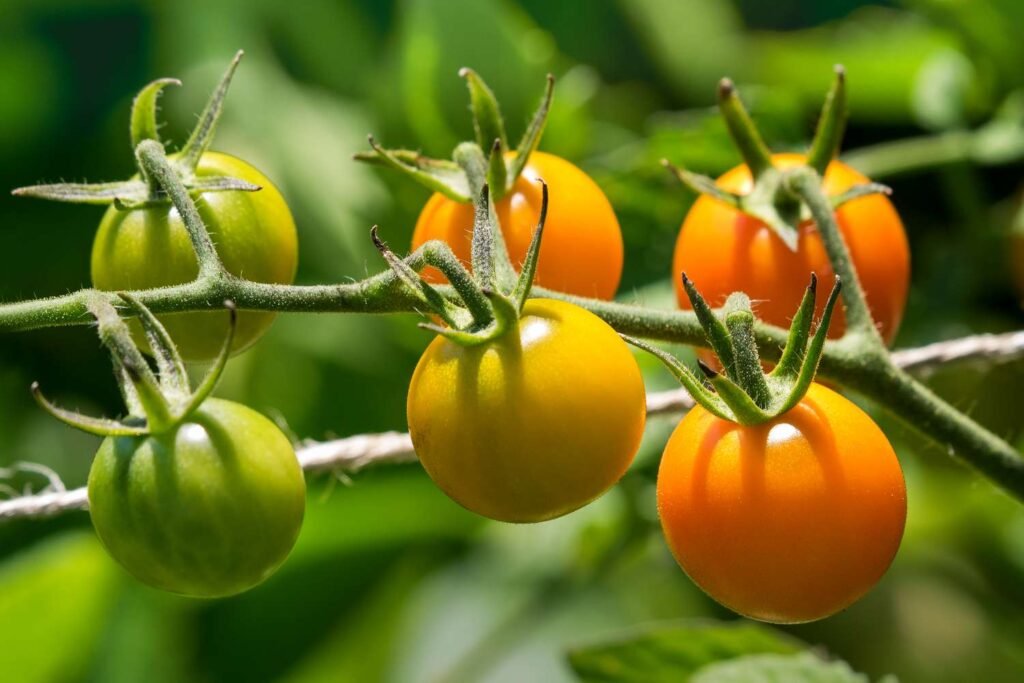
Why It Thrives in Containers
Green onions have shallow roots, grow quickly, and can even be regrown from kitchen scraps. They are ideal for windowsill gardens and require minimal space.
Growing Tips
- Use a shallow container (4–6 inches deep) with loose soil.
- Sow seeds or regrow from leftover roots in water or soil.
- Provide 4–6 hours of sunlight or use artificial light indoors.
- Harvest continuously by snipping outer leaves, leaving roots to regrow.
Varieties Recommended
- ‘Evergreen Long White’ – fast-growing, mild flavor
- ‘White Lisbon’ – compact and ideal for small spaces
7. Carrots (Mini or Baby Varieties)
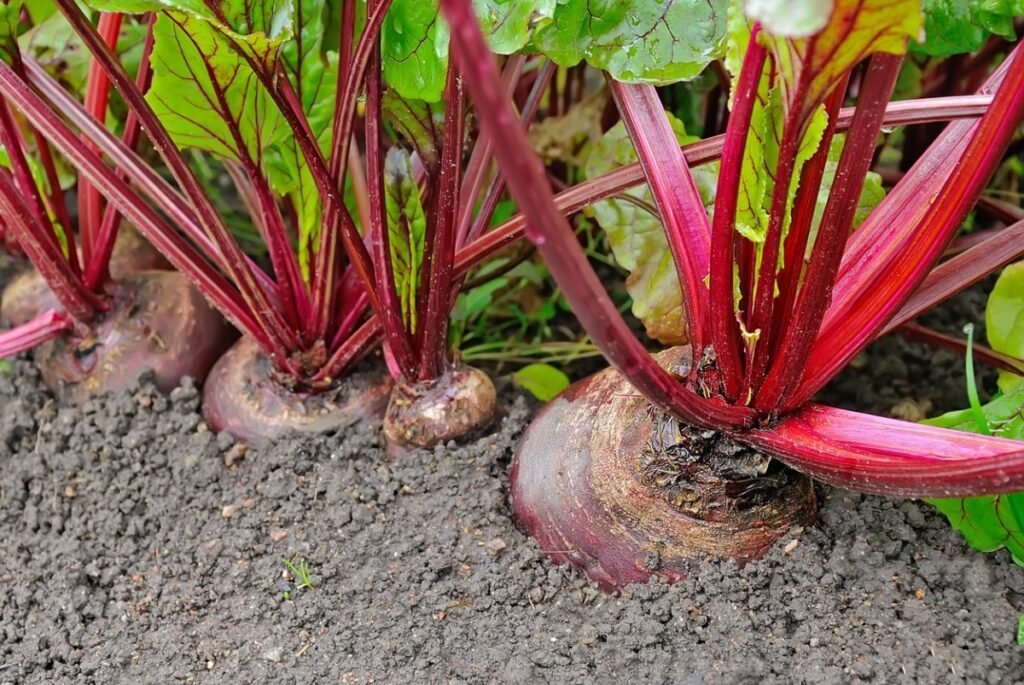
Why It Thrives in Containers
Carrots are root vegetables that thrive in deep, loose soil, but compact or baby varieties are perfectly suited for containers. They are rewarding to grow and perfect for indoor or balcony gardening.
Growing Tips
- Use 8–12 inch deep containers with loose, sandy soil for proper root development.
- Sow seeds thinly and thin seedlings to allow spacing.
- Keep soil evenly moist; carrots may become bitter if stressed.
- Harvest baby carrots in 40–50 days, or full-size carrots in 60–70 days.
Varieties Recommended
- ‘Thumbelina’ – miniature, sweet
- ‘Nantes’ – compact and tender
Expert Tips for Growing Vegetables Without a Garden
- Choose Containers Wisely: Select pots that match the root depth and growth habit of each vegetable.
- Prioritize Drainage: Ensure all containers have drainage holes and use saucers to prevent waterlogging.
- Use High-Quality Soil: Potting mix with compost, perlite, and slow-release fertilizer ensures healthy, nutrient-rich growth.
- Succession Planting: Sow small batches every 2–3 weeks for a continuous harvest.
- Provide Adequate Light: Most vegetables need 6–8 hours of sunlight. Indoors, supplement with LED grow lights if necessary.
- Consistent Watering: Check moisture regularly; containers dry faster than garden beds.
- Pest Management: Inspect plants frequently and use organic pest controls like neem oil or insecticidal soap.
Benefits of Growing Vegetables Without a Garden
- Space Efficiency: Grow food in apartments, balconies, or small patios.
- Year-Round Production: Indoor containers allow for continuous growth regardless of season.
- Healthier Eating: Access to fresh, chemical-free vegetables at your fingertips.
- Cost-Effective: Reduces grocery bills and eliminates the need for large garden plots.
- Eco-Friendly: Encourages sustainable, local food production and reduces carbon footprint.
Conclusion
You don’t need a traditional garden to enjoy fresh, homegrown vegetables. By selecting the right vegetables and growing them in containers, anyone—regardless of space or schedule—can enjoy healthy, flavorful produce.
The seven vegetables that thrive without a garden are:
- Lettuce – fast-growing and ideal for cut-and-come-again harvesting.
- Spinach – nutrient-rich and suited for cool, indoor environments.
- Radishes – quick-growing root vegetables with minimal space requirements.
- Tomatoes – compact, container-friendly varieties for sunny spaces.
- Peppers – bell and chili peppers thrive in warm, bright containers.
- Green onions – shallow-rooted, regrowable, and perfect for windowsills.
- Carrots – mini varieties grow well in deep containers for tasty harvests.
By following expert advice on containers, soil, light, and watering, even those with limited outdoor space can cultivate a thriving, productive vegetable garden, making fresh salads, soups, and meals possible anytime.
